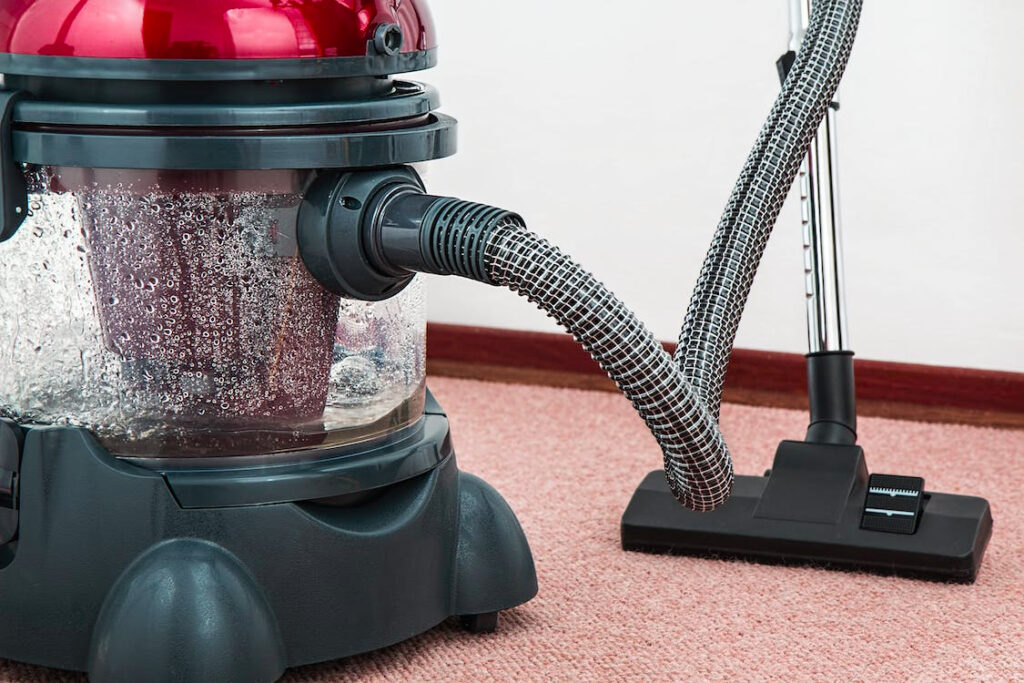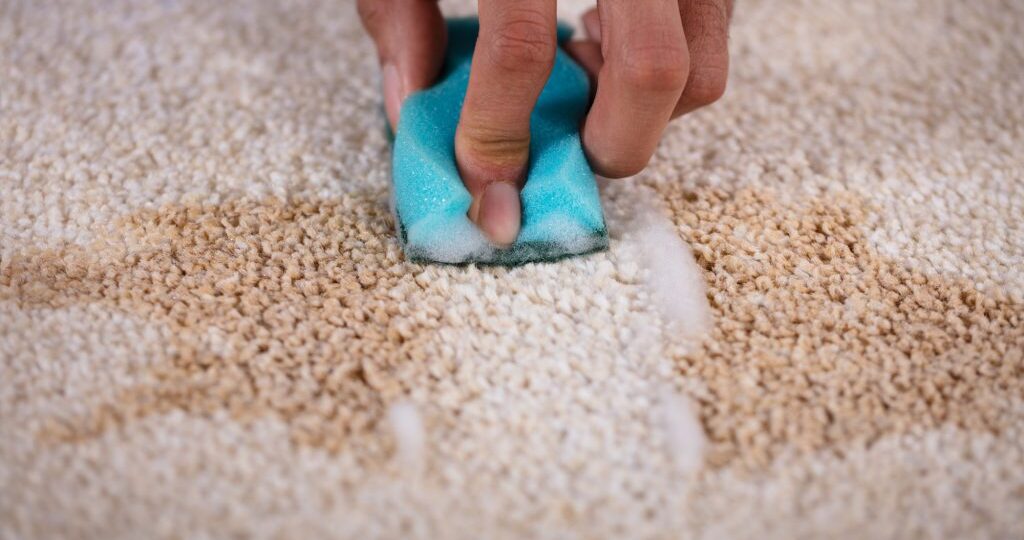What is Carpet?
Carpet is a popular flooring option that adds comfort, warmth, and style to any space. It is made of soft, woven fibres or loops that can be made from various materials such as nylon, polyester, or wool. Carpets are available in a wide range of colours, patterns, and pile heights, making them versatile and suitable for different interior design preferences. However, over time, carpets can wear down due to high foot traffic, stains, or other forms of damage. Knowing when to replace your carpet is essential to maintain a clean and hygienic environment in your home or office.
Why Replace Carpet?
Knowing when to replace your carpet is important for maintaining a clean and comfortable living space. Several factors can contribute to the need for carpet replacement, including wear and tear, stubborn stains, damage, and outdated style.
High-traffic areas in your home, like hallways or living rooms, are prone to more foot traffic, which can cause the carpet to wear down over time. Visible signs of wear, such as flattened carpet pile or matting, are a clear indication that it’s time for a replacement.
Stubborn stains that refuse to come out, despite regular cleaning and deep-cleaning efforts, may also require replacing the carpet. Certain stains, especially those caused by pet accidents or water damage, can penetrate the carpet fibres and leave an unpleasant odour that is difficult to eliminate.
Moreover, damage to the carpet, such as tears, burn marks, or water damage, can compromise its appearance and functionality. If the damage is extensive or affects a large area, it is often more practical to replace the entire carpet rather than trying to repair or patch it.
Lastly, the style of your carpet may become outdated over time. If your carpet colours or patterns no longer suit your aesthetic preferences or the overall decor of your home, it may be time for an upgrade to a more modern carpet option.
In conclusion, it is important to pay attention to the condition of your carpet and be aware of the signs that indicate a replacement is necessary. Whether it’s due to wear and tear, stubborn stains, damage, or outdated style, replacing your carpet can drastically improve the appearance and air quality of your space.
How Often Should You Replace Your Carpet?
Knowing when to replace your carpet is crucial for maintaining a clean and inviting living space. The lifespan of a carpet can vary depending on various factors, including the type of carpet, the quality of its construction, and the level of foot traffic it endures.
On average, a well-maintained modern carpet can last between five and fifteen years. However, there are clear signs that indicate it’s time for a replacement. The most notable sign is irreversible wear and tear, such as threadbare areas, where the carpet fibres are worn down, or flattened pile, where the carpet no longer feels plush underfoot.
Additionally, stubborn stains that resist all attempts at removal, despite regular cleaning and deep-cleaning efforts, can be a strong indication that it’s time to replace the carpet. This is especially true for pet accidents or water damage stains, which can penetrate the carpet fibres and leave unpleasant odours even after deep cleaning.
Uneven fading or discolouration, along with a persistent foul odour, can also signal the need for replacement. Even professional cleaning may not be able to fully eliminate these issues, and they can significantly affect the overall air quality in your home.
In summary, while a modern carpet can have a lifespan of several years, signs of irreversible wear and tear, stubborn stains, strong odours, flattened pile, and uneven fading are clear indications that it’s time to consider replacing your carpet. By doing so, you can ensure a fresh and comfortable living space for years to come.
Signs You Need to Replace Your Carpet
While carpets can add comfort and style to your home, they inevitably wear out over time. Knowing when to replace your carpet is essential for maintaining a clean and healthy living space. In this article, we will explore the key signs that indicate it’s time for a carpet replacement, ranging from irreversible wear and tear to stubborn stains and unpleasant odours. By identifying these signs promptly, you can ensure that your flooring remains in top condition and your home maintains a fresh, welcoming atmosphere.
1. Irreversible Wear and Tear:
One of the most obvious signs that it’s time to replace your carpet is irreparable wear and tear. Over time, high-traffic areas may develop threadbare patches where the carpet fibres are worn down. Additionally, flattened pile in these areas can make the carpet feel less comfortable underfoot. If your carpet shows these signs, it’s a strong indication that it has reached the end of its lifespan.
2. Stubborn Stains:
No matter how diligently you clean your carpet, some stains may prove to be incredibly challenging to remove completely. Pet accidents, water damage, and other tough stains can penetrate the carpet fibres and leave behind unpleasant odours, even after deep cleaning efforts. If your carpet has stubborn stains that persist despite your best cleaning attempts, it may be time to consider a replacement.
3. Discolouration and Foul Odours:
Uneven fading or discolouration, along with a persistent foul odour, can indicate the need for carpet replacement. Even with professional cleaning, these issues may not be eliminated, and they can significantly impact the air quality in your home. If your carpet exhibits these signs, it’s advisable to replace it to maintain a fresh and healthy living environment.
In conclusion, being vigilant about the signs that indicate the need for carpet replacement is crucial. By addressing irreversible wear and tear, stubborn stains, and unpleasant odours promptly, you can ensure that your home remains comfortable, stylish, and free from health hazards. At Flooring King, we offer a wide range of high-quality carpets to suit every taste and requirement, ensuring that you can find the perfect replacement for your worn-out flooring.
High-Traffic Areas
High-traffic areas in a home or commercial space are those that experience a significant amount of foot traffic on a regular basis. These areas include entryways, hallways, living rooms, kitchens, and staircases.
When it comes to carpets in high-traffic areas, the impact of foot traffic is particularly noticeable. The constant movement of people can lead to increased wear and tear on the carpet fibres. The abrasive action of shoes and the repeated pressure on the carpet from footsteps can cause the fibres to flatten and fray. Over time, this can make the carpet look worn out and tired.
In addition to wear and tear, high foot traffic also increases the likelihood of stains and dirt accumulation. People tracking in dirt, mud, and other debris from outdoors can cause the carpet to become dirty and stained. Spills and accidents are also more likely to occur in high-traffic areas, further compromising the cleanliness and appearance of the carpet.
To combat the effects of high foot traffic, it’s important to choose a high-quality carpet that is designed to withstand heavy use. Regular cleaning and maintenance, including vacuuming and professional cleaning, can help remove dirt and stains and extend the lifespan of the carpet. However, even with proper care, carpets in high-traffic areas may need to be replaced more frequently due to the increased wear and tear they undergo.
Foot Traffic
Foot traffic on carpets is determined by various factors, including the number of individuals walking on it, the frequency of use, and the types of activities performed on the carpet. In areas such as hallways, entryways, and living spaces, foot traffic tends to be higher compared to less frequently used rooms.
The constant pressure and movement from foot traffic can lead to wear and tear on the carpet. Over time, the carpet fibres can become matted and flattened, losing their original texture and appearance. This is especially noticeable in areas with heavy foot traffic, where the fibres are continuously being compressed and pushed down.
As the carpet fibres become matted and flattened, the overall appearance of the carpet deteriorates. It may start to look worn out and tired, with the pile losing its fullness. In high-traffic areas, this wear and tear can occur more rapidly.
Regular maintenance and cleaning can help mitigate the effects of foot traffic on carpets. Vacuuming regularly can prevent dirt and debris from accumulating in the fibres, reducing abrasion and potential damage. In addition, professional carpet cleaning services can remove stubborn stains and rejuvenate the carpet fibres.
Considering the type of carpet and materials used, as well as the level of foot traffic in a specific area, can also help determine how often the carpet should be replaced. By addressing foot traffic and its impact on carpet fibres, one can ensure that their carpets maintain their quality and appearance for longer periods.
Obvious Signs of Wear and Damage
Visible wear and damage are clear indicators that your carpet may need replacement. One of the most obvious signs is fraying edges, where the carpet fibres begin to unravel and separate from the binding. This not only affects the appearance of the carpet but can also lead to further damage if left unaddressed.
Another sign to watch out for is bald spots, where the carpet pile has worn away completely, leaving the backing exposed. These areas are highly susceptible to further wear and can be prone to tearing and unravelling.
Excessive matting or crushing of the fibres is another telltale sign that your carpet is reaching the end of its lifespan. Over time, high-traffic areas can become flat and compressed, losing their original texture and fullness. This can make the carpet look dull and worn out.
Tears or holes in the carpet are also clear indications that it may be time to replace it. These damages not only affect the carpet’s appearance but can also pose a tripping hazard.
Ultimately, if you notice any of these obvious signs of wear and damage, it is advisable to consider replacing your carpet. This will not only improve the overall look and feel of your space but also ensure a safe and comfortable environment for you and your family.

Stains that Are Difficult to Remove
Stains can be a common challenge when it comes to maintaining the beauty and cleanliness of your carpet. Some stains, like red wine, food spills, pet stains, ink, and oil, can be particularly difficult to remove.
Red wine stains, for example, contain pigments that can quickly penetrate deep into the carpet fibres, making them stubborn to eliminate. Food spills, especially those that contain dyes and fats, can also leave behind visible marks.
Pet stains, such as urine and vomit, not only leave an unsightly appearance but can also produce a foul odour if not properly treated. Ink stains are known for their ability to quickly spread and soak into the fibres, requiring immediate attention. Similarly, oil-based stains can easily adhere to carpet materials, making them hard to get rid of completely.
These stains can be challenging to eliminate due to their deep penetration into the carpet fibres. Additionally, improper cleaning methods can cause damage to the carpet, such as spreading the stain further or causing the fibres to become discoloured or weakened.
To effectively tackle these stubborn stains, it is recommended to seek the assistance of professional carpet cleaners who have the expertise and equipment for deep cleaning and stain removal. They can employ specialised techniques and products that are suitable for specific stain types, ensuring a thorough and safe cleaning process.
At Flooring King, we understand the frustration of dealing with tough stains on your carpets. That’s why we offer a range of high-quality carpets that are designed to be stain-resistant, making them easier to clean and maintain. Visit our store to explore the different carpet options available that best suit your needs and ensure a long-lasting, beautiful floor for your home or office.

Bad Smells or Unpleasant Odours
Bad smells or unpleasant odours in carpets can arise for various reasons. One common cause is mould growth, which can occur when moisture seeps into the carpet fibres. Mould not only leaves a musty odour but also poses health hazards. Another culprit is pet urine, which can penetrate deep into the carpet padding, resulting in a persistent and unpleasant smell. Regular cleaning may not be enough to eliminate these bothersome odours as they require specialised treatment.
While professional deep cleaning can help address bad smells or unpleasant odours, it is not always guaranteed to fully eliminate them. This is because the source of the smell, such as mould or deeply embedded pet urine, may require more intensive treatments, such as carpet replacement.
There are key signs that suggest the need for carpet replacement, and persistent foul smells are one of them. If regular cleaning and professional treatments fail to get rid of the odour, it may indicate that the smell has penetrated deep into the carpet fibres or padding, making replacement necessary.
In such cases, it is advisable to consult a carpet expert who can assess the extent of the odour and recommend the appropriate actions. They can guide you in choosing high-quality carpets with natural retention properties and assist in the proper installation to minimise the risk of foul odours in the future.
Remember, addressing bad smells or unpleasant odours promptly is crucial not only for maintaining a fresh and clean home but also for ensuring a healthy indoor environment.
Rule of Thumb for Cleaning & Maintenance
As a homeowner, it’s important to maintain and care for your carpets to ensure they stay in good condition for as long as possible. Regular cleaning and maintenance are key factors in extending the lifespan of your carpets. However, there are times when replacement becomes necessary.
A general rule of thumb is to have your carpets professionally cleaned every 12 to 18 months, depending on the amount of foot traffic in your home. This regular cleaning helps to remove excess dirt and stains, keeping your carpets looking fresh and preventing premature wear and tear.
Despite regular cleaning, several signs may indicate the need for carpet replacement. Excessive dirt and tough stains that cannot be removed are clear indicators that your carpets have reached their limit. Visible wear and tear, such as fraying edges or flattened carpet pile, are also signs that replacement may be necessary.
Another key sign is the presence of unpleasant odours that persist even after professional cleaning. Foul smells could be a result of deeply embedded pet urine, mould, or other sources that may require more intensive treatments or complete carpet replacement.
By following the rule of thumb for regular cleaning and maintenance, and paying attention to signs such as excessive dirt, tough stains, visible wear and tear, and unpleasant odours, you can determine when it’s time to replace your carpets and maintain fresh and clean living space.
Quality Considerations When Replacing Carpet
When it comes to replacing your carpet, there are several quality considerations you should keep in mind. Firstly, the type of carpet you choose can make a significant difference in both durability and appearance. High-traffic areas may require a more resilient carpet material, such as nylon or polyester, that can withstand the wear and tear from constant foot traffic. Additionally, the carpet pile, or thickness of the fibres, can affect how well the carpet holds up over time. A higher-quality carpet with a denser pile is often more resistant to flattening and can maintain its appearance for longer periods. Furthermore, the quality of the carpet padding is essential for overall comfort and longevity. A good-quality padding will absorb impact, provide insulation, and help extend the life of your carpet. Lastly, selecting the right carpet colour and style is crucial to achieving the desired aesthetic in your space. By considering these quality factors, you can ensure that your carpet replacement will be a long-lasting and visually appealing investment.
Pile Depth and Type of Carpet Material Used
How Often Should You Replace Carpet?
When considering carpet replacement, two key factors to keep in mind are the pile depth and the type of carpet material used. Pile depth refers to the height and thickness of the carpet fibres, which can greatly impact its appearance and durability.
Deep pile carpets, while providing a luxurious feel underfoot, are more prone to showing foot traffic and wear over time. In high-traffic areas, such as hallways or living rooms, it’s important to choose a carpet with a shorter, tighter pile to better withstand the constant use.
Another crucial aspect to consider is the type of carpet material. Different carpet materials have varying characteristics and suitability for high-traffic areas. Nylon is known for its durability and resistance to stains, making it a popular choice. Polyester carpets offer excellent colour retention and are more budget-friendly. Wool carpets are luxurious and naturally resilient but may require more maintenance. Silk carpets, while elegant, are best suited for low-traffic areas due to their delicate nature.
Selecting the appropriate pile depth and carpet material is crucial for determining the lifespan and performance of your carpet. Regular cleaning and maintenance, such as deep cleaning and professional carpet cleaning, can extend its longevity. However, visible damage, stubborn stains, or foul odours are key signs that it may be time to replace the carpet.
In conclusion, assessing the pile depth and type of carpet material used is essential for determining when to replace your carpet. Consider the level of foot traffic, desired appearance, and specific requirements of each room to ensure you choose a high-quality carpet that will withstand the test of time.
Quality of the Entire Carpet
When it comes to replacing carpet, it’s essential to prioritise the quality of the entire carpet. Several factors contribute to the overall quality and durability of a carpet.
Firstly, the carpet fibre plays a crucial role. Opting for a high-quality fibre, such as nylon or wool, ensures long-lasting durability. These fibres have natural retention properties, meaning they can withstand high foot traffic and resist wear and tear over time. Nylon is particularly known for its excellent durability and resistance to stains, making it a popular choice for high-traffic areas.
Weight and density are also important considerations. A carpet with a higher weight and density is generally more durable and resistant to crushing. This ensures that the carpet can withstand heavy foot traffic without losing its plush appearance.
The twist level of the carpet fibres is another indicator of quality. Higher twist levels result in a more durable and resilient carpet that can bounce back easily after being walked on.
Furthermore, the colour and pattern of the carpet can also affect its quality. Darker colours and intricate patterns are better at hiding stains and dirt, while lighter colours and plain patterns may require more frequent cleaning.
By considering these quality factors, such as fibre durability, weight and density, twist level, and carpet colour and pattern, you can ensure that the carpet you choose will withstand everyday wear and tear and maintain its appearance for years to come.
Modern vs Traditional Styles
When it comes to choosing a carpet style, there are distinct differences between modern and traditional designs.
Modern styles are characterised by their bold and geometric patterns, which can add a contemporary and edgy look to any space. These designs often feature clean lines and abstract motifs, bringing a sense of modernity and sophistication to a room. In terms of colour schemes, modern carpets tend to incorporate bold and vibrant hues, such as deep blues, bright yellows, and rich reds, creating a focal point that adds visual interest.
On the other hand, traditional styles of carpets tend to draw inspiration from classic and timeless designs. Floral patterns, oriental motifs, and intricate detailing are commonly seen in traditional carpets, bringing a touch of elegance and nostalgia to a room. These designs often feature softer and more muted colour palettes, such as pastel tones and earthy shades, enhancing a sense of warmth and traditional charm.
Whether you prefer the bold, geometric patterns of modern styles or the timeless elegance of traditional designs, choosing the right carpet can greatly impact the overall aesthetic of your space. Consider the design elements, patterns, and colour schemes that best complement your personal style and the atmosphere you want to create in your home.
Polyester Carpets vs Natural Fibres
Polyester carpets and natural fibres are two popular options when it comes to choosing the right carpet for your home. Understanding the differences between these materials can help you make an informed decision.
Polyester carpets, made from synthetic fibres, offer several advantages. They are highly durable and resistant to high-traffic areas and foot traffic, making them ideal for busy households. Polyester is also known for its stain resistance, as it has natural water repellency. This makes it easier to remove stubborn stains and maintain the carpet’s fresh appearance. Additionally, polyester carpets come in a wide range of colours and styles, making it easier to find the perfect match for your interior.
On the other hand, natural fibre carpets, such as wool, sisal, and seagrass, have their own set of advantages. They are known for their exceptional durability and longevity, making them a great investment that will last for years. These carpets also have a natural retention property, which means they can effectively regulate indoor air quality by absorbing allergens and pollutants. Furthermore, natural fibre carpets are eco-friendly and biodegradable.
However, natural fibre carpets may have some disadvantages. They can be more prone to water damage and may require regular deep cleaning or professional cleaning to maintain their appearance. Additionally, they may be more expensive compared to polyester carpets.
In summary, polyester carpets are a good choice for high-traffic areas and offer excellent stain resistance, while natural fibre carpets provide durability, air quality benefits, and an eco-friendly option. Consider your specific needs and preferences before deciding which type of carpet material is best for you.
Liam Cleverdon, one of 2 directors is the driving force behind Flooring King's sales team. With vast experience and knowledge in the industry, Liam transforms customers homes with incredible advice and expert opinion that raises industry standards.












